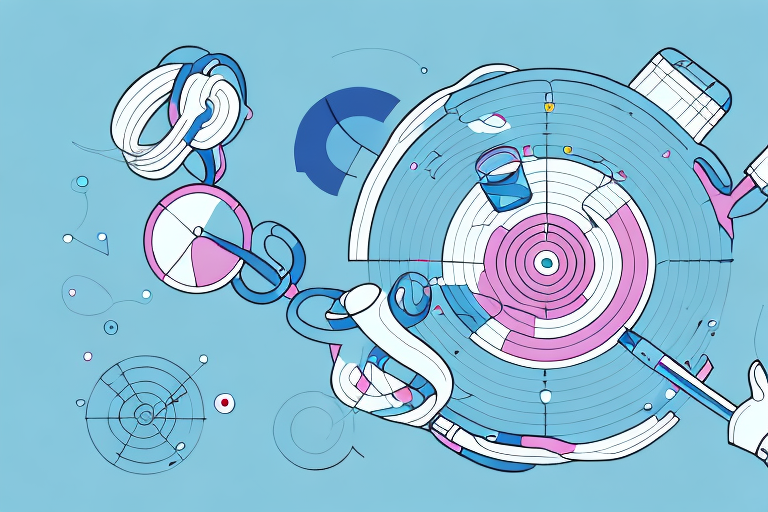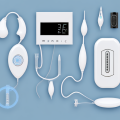Are you someone who regularly experiences deep tissue or IT band pain? These kinds of pains can be excruciating and limit one’s ability to carry out everyday activities. Fortunately, there is a way to alleviate these pains and recover quicker – using a massager!
Understanding Deep Tissue and IT Band Pain
Before we dive into how massagers can help with these kinds of pain, it’s essential to understand what deep tissue and IT band pain is all about. Deep tissue pain refers to discomfort originating from muscles, tendons, or fascia deep within the body. It is usually caused by overuse or injury and often presents itself as a dull aching pain.
The IT, or iliotibial, band is a long, thick band of connective tissue that runs from the pelvis to the knee. IT band pain is a common injury among runners, cyclists, and those engaging in repetitive movements. IT band pain often leads to discomfort and can limit mobility.
It is important to note that IT band pain can also be caused by poor posture or muscle imbalances. When the muscles surrounding the IT band are weak or tight, it can cause the band to become inflamed and painful. This is why stretching and strengthening exercises are often recommended as part of the treatment for IT band pain.
What Is a Massager and How Does It Help?
A massager, as the name suggests, is a device that provides mechanical vibration, percussive or pressure stimulation directly to body parts that are aching. Massagers work by relaxing and stretching tense muscles, and helping to sooth cramps and spasms. They’re also thought to increase blood flow to the affected area, which can speed up the healing process.
In addition to providing relief for sore muscles, massagers can also be used for stress relief and relaxation. The gentle vibrations and pressure can help to calm the mind and reduce tension throughout the body. Some massagers even come with heat therapy, which can further enhance the relaxation benefits. Regular use of a massager can also improve flexibility and range of motion, making it a great tool for athletes or anyone looking to improve their physical performance.
Different Types of Massagers and Their Benefits
There’s a wide variety of massagers available in the market. Choosing the right one for you depends on your budget and individual preferences. Here are some types of massagers and their benefits:
- Handheld Massagers: These are perhaps the most popular massagers available. They’re lightweight, portable, and offer muscle pain relief when you’re in need of it. They’re commonly used for deep tissue massage and provide both vibration and percussion massage.
- Foot Massagers: These are perfect for those who experience foot pain or spend a lot of time on their feet. They offer kneading, rolling, and heat therapy to help alleviate your pain.
- Chair Massagers: These are a great way to get a full-body massage. Chairs can offer various massage techniques and intensity levels, making them perfect for both deep tissue and relaxation massage.
- Massage Guns: These devices are designed to deliver deep tissue massage through rapid percussion. They aim to decrease muscle soreness and stiffness, improve mobility, and accelerate muscle recovery.
It’s important to note that while massagers can provide relief for muscle pain and soreness, they should not be used as a substitute for medical treatment. If you have a medical condition or injury, it’s best to consult with a healthcare professional before using a massager.
Choosing the Right Massager for Your Needs
Choosing the right massager depends on what kind of pain you’re experiencing and your budget. Consider what types of massage techniques, intensity levels, and attachments the massager offers before making your final decision. Additionally, it’s essential to consider the portability, weight, and ease of use, especially if you intend to use the massager frequently or travel with it.
Another important factor to consider when choosing a massager is the power source. Some massagers are corded, while others are cordless and rechargeable. Corded massagers provide consistent power, but they limit your mobility. On the other hand, cordless massagers offer more flexibility, but they may not provide as much power or last as long on a single charge. It’s important to weigh the pros and cons of each option and choose the one that best fits your needs.
Techniques for Using a Massager on Deep Tissue and IT Band Pain
When it comes to using a massager, there are various techniques you can explore to get the best results. For deep tissue pain, it’s essential to warm-up first through stretching for maximum effectiveness. Start by using circular motions with the massager, then work the pressure diagonally and longitudinally over the sore area. You can adjust the intensity and pressure on your massager so that it doesn’t feel too overwhelming.
For IT band pain, you can use a foam roller and a massage gun. Start by using the roller to roll across the IT band slowly, and then apply the massage gun to target specific knots and trigger points.
It’s important to note that using a massager on deep tissue and IT band pain should not be a substitute for seeking medical advice. If you experience chronic or severe pain, it’s best to consult with a healthcare professional to determine the underlying cause and appropriate treatment plan. Additionally, it’s important to use the massager correctly and not overuse it, as this can lead to further injury or discomfort.
Precautions to Take When Using a Massager
While massagers offer many benefits, it’s essential to be cautious when using them. When using handheld massagers, use them only for short periods of time to prevent overstimulation. Additionally, avoid massaging over bones or joints, open wounds, or areas that have poor circulation. Finally, it’s advisable to consult your doctor before using a massager if you have any pre-existing medical conditions.
Complementary Therapies to Use Alongside a Massager
Massagers work great as a standalone therapy. Still, they can work even better when combined with other traditional therapies such as rest, ice or heat therapy, over-the-counter medication, or even physical therapy. It is possible to amplify the recovery process and reduce pain when using massagers in conjunction with these additional therapies.
The Science Behind the Effectiveness of Massagers
Studies have shown that massage therapy can help relieve muscle pain and soreness. Multiple trials also show the benefits of using massagers in rehabilitative care. Massagers can improve range of motion and help regrow tissues, often as effectively as other traditional therapies. In general, massagers have been an accepted therapy for ancient Chinese and Indian medicine dating back thousands of years.
Success Stories of People Who Have Benefitted from Using a Massager for Deep Tissue and IT Band Pain
Many people have benefited from using massagers for deep tissue and IT band pain. Athletes who engage in high-intensity sports like boxing or running have found great relief from muscle pain and soreness through massage therapy. Patients with neuromuscular disorders such as multiple sclerosis and muscular dystrophy swear by massage therapy helping them to improve daily functionality.
Conclusion
Massagers are an excellent tool to alleviate deep tissue and IT band pain. They work by reducing muscle tension, promoting relaxation, and increasing circulation. With so many different types of massagers available, it’s essential to choose one that best fits your needs. Always take precautions when using a massager, and if necessary, consult your doctor before using one. When used correctly, massagers can be an invaluable tool in pain relief and recovery.





